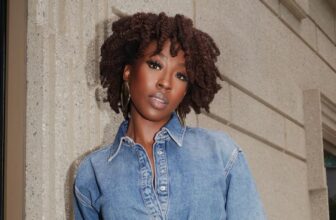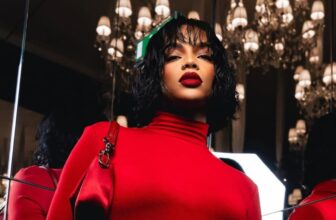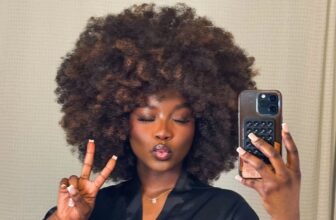The Beauty Routine Essentials for Every Curly Hair Type
Curly hair comes in a variety of textures, lengths, and thicknesses, making it essential to develop a tailored beauty routine to keep those locks looking their best.
There are four major hair types, with curly hair being just one of them. Curls vary widely, from loose and flowing to tight and bouncy. Curly hair spans from loose curls to tight ones, each requiring its own care routine. The curl pattern is determined by the tilt of the hair follicle bulbs—the more they tilt, the smaller and more compact the curls become.
Curly hair types are classified into different types, which are explained below. Unlike straight hair, which lacks a defined curl pattern, and wavy hair that forms loose S-shaped waves, curly hair has distinct spiral shapes, and coily hair forms tight, densely packed curls. Factors like genetics, hormonal changes, environmental conditions, and follicle distribution influence these curl patterns. Hence, understanding these differences is key to an effective curly haircare routine.
Curly hair, with its diverse structures and textures, demands specialized care to maintain its health, shine, and manageability. From loose waves to tight coils, each curly hair type has distinct characteristics and needs.
Ahead is a comprehensive guide to the beauty routine essentials for every curly hair type, ensuring your curls look their best every day.
Understanding Curly Hair Types
Curly hair is generally classified into three main types: wavy (Type 2), curly (Type 3), and coily (Type 4). Each type has subcategories that further define the curl pattern:
Type 2 (Wavy)
- 2A: Fine, loose waves with minimal frizz and a slight S-pattern.
- 2B: Medium texture with more defined waves that tend to frizz.
- 2C: Coarse with well-defined, S-shaped waves and significant frizz.
Type 3 (Curly)
- 3A: Loose, springy curls with a shiny and large S-shaped pattern.
- 3B: Tighter, voluminous curls with more defined spirals.
- 3C: Dense, corkscrew curls with tight, highly textured spirals.
Type 4 (Coily/Kinky)
- 4A: Soft, defined coils with an S-shaped pattern.
- 4B: Zigzag pattern with less defined curls, more prone to shrinkage.
- 4C: Tight, densely packed coils with minimal definition and significant shrinkage.
Essential Beauty Routine for Curly Hair Type 2 (Wavy Hair)
Cleansing and Conditioning:
Use a sulfate-free shampoo to cleanse without stripping natural oils. Look for products with moisturizing ingredients like glycerin, aloe vera, and chamomile extract to maintain wave definition and prevent dryness.
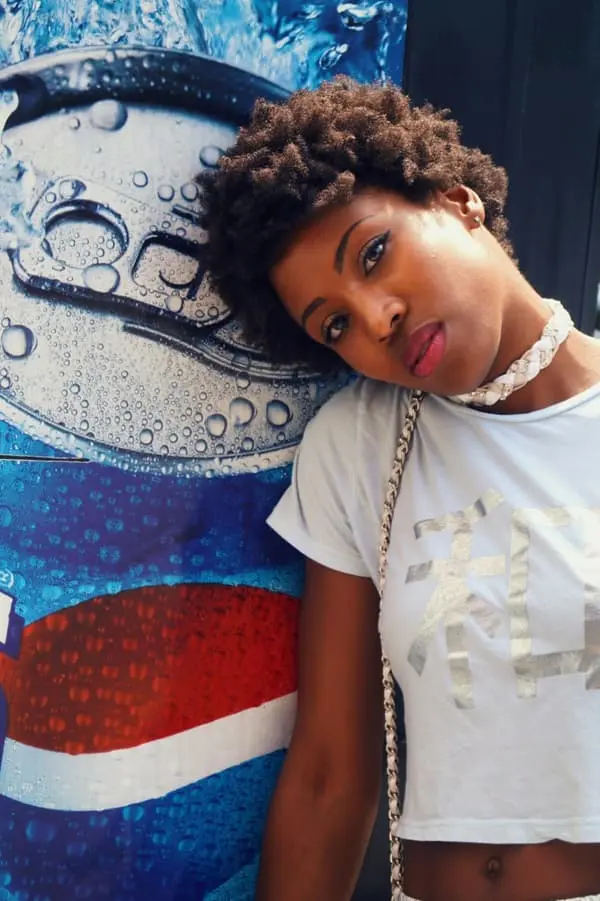 Photo: Sabrina Kennelly/Pexels
Photo: Sabrina Kennelly/Pexels Opt for a lightweight, hydrating conditioner to prevent waves from becoming weighed down. Ingredients like coconut water, jojoba oil, and green tea extract work well to nourish and hydrate without causing build-up.
Styling:
A light leave-in conditioner helps maintain moisture and reduce frizz. Avoid heavy formulations that can make hair look greasy. Look for products with lightweight oils like argan oil or grapeseed oil.
To enhance wave definition and provide hold, apply a mousse or light gel. Choose products with anti-frizz properties and humidity resistance to keep waves looking their best all day. Use a diffuser attachment on a blow dryer to dry waves gently and enhance their natural pattern. Set the dryer to a low heat and speed setting to prevent frizz and encourage natural wave formation.
Maintenance:
Detangle your wet hair with a wide-tooth comb to prevent breakage and maintain wave patterns. Start at the ends and work your way up to minimize damage. Always Sleep on a silk pillowcase to reduce friction and frizz, preserving wave integrity overnight.
Silk pillowcases also help retain moisture in the hair, preventing dryness and breakage. Use wave-refreshing sprays on non-wash days to revive and define waves without re-washing. Look for sprays with lightweight hydrating ingredients like aloe vera, rose water, and glycerin.
Essential Beauty Routine for Curly Hair Type 3 (Curly Hair)
Caring for curly hair means knowing its special needs and using the right products and methods. By customizing your routine to match your curl type, you can boost your hair’s natural beauty, keep it healthy, and enjoy your curls with confidence. Whether your hair has loose waves, bouncy curls, or tight coils, these tips will help you look your best every day.
Cleansing and Conditioning:
Use a moisturizing shampoo to hydrate and cleanse curls without stripping essential oils. Look for products containing shea butter, argan oil, and silk protein to maintain moisture balance.
Choose a rich, hydrating conditioner to nourish and detangle. Ingredients like avocado oil, honey, and panthenol provide deep hydration and smooth the hair cuticle.
Styling:
Apply a curl cream to define curls and add moisture. Ensure the cream is rich but not too heavy to avoid weighing down curls. Look for products with hydrating ingredients like coconut oil, shea butter, and aloe vera. Use a curl enhancer or gel for added hold and definition.
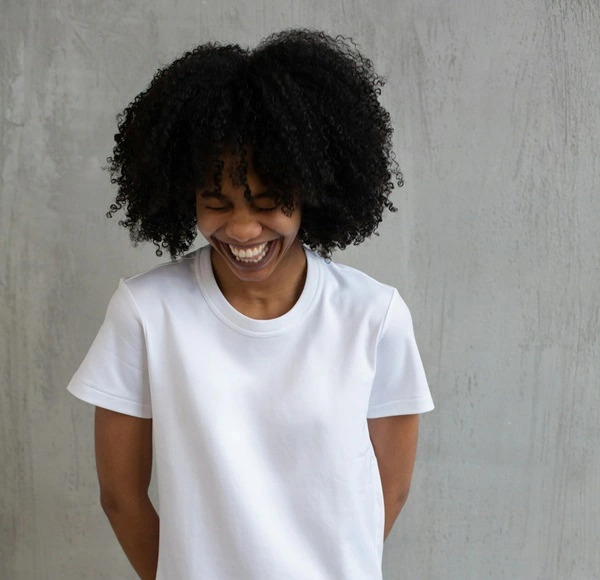 Photo: Monstera Production/Pexels
Photo: Monstera Production/Pexels Look for curl-enhancing products that offer flexibility and movement without causing crunchiness. Ingredients like flaxseed extract, pectin, and glycerin are ideal.
Plop hair using a microfiber towel or cotton T-shirt to reduce frizz and enhance curl shape. This method involves wrapping hair in a towel or T-shirt to absorb excess moisture without disturbing the curl pattern. Leave the hair plopped for at least 20-30 minutes before air drying or diffusing.
Maintenance:
Use a detangling brush on wet hair to remove knots gently and maintain curl integrity. Brushes with flexible bristles are best to minimize breakage. Gather hair into a loose, high ponytail at night to protect curls while sleeping.
This is called the pineapple method and it reduces friction and prevents curls from getting crushed, maintaining curl definition and volume. Use curl-refreshing sprays with hydrating ingredients to revive and rehydrate curls between washes. Look for sprays with aloe vera, rose water, and glycerin for a quick moisture boost.
Essential Beauty Routine for Curly Hair Type 4 (Coily/Kinky Hair)
Cleansing and Conditioning:
Consider co-washing (using conditioner instead of shampoo) to maintain moisture. Choose cleansing conditioners with nourishing ingredients like tea tree oil, peppermint, and chamomile to soothe the scalp and hydrate the hair.
Regular deep conditioning treatments are essential for intense hydration. Use masks with ingredients like shea butter, castor oil, and aloe vera to penetrate the hair shaft and provide long-lasting moisture.
Styling:
Using a leave-in conditioner when styling your curly hair helps to keep the coils moisturized and manageable. Opt for creamy formulations that provide long-lasting hydration. Ingredients like shea butter, coconut oil, and aloe vera are ideal. Use a rich styling butter or cream to define coils and provide moisture.
Look for products with natural oils like olive oil, coconut oil, and mango butter to add shine and reduce frizz. Seal in moisture with natural oils like coconut oil, olive oil, or jojoba oil. Apply oil after moisturizing to lock in hydration and add shine. Oils also help to protect the hair from environmental damage and prevent breakage.
Maintenance:
Detangle gently with fingers to minimize breakage. Use a conditioner or oil to ease the process and reduce friction. Wear protective styles like braids, twists, or bantu knots to reduce manipulation and protect ends.
These styles help retain moisture, reduce tangling, and promote healthy hair growth. Sleep with a satin bonnet or scarf to retain moisture and reduce friction, protecting delicate coils. Satin-lined hats and headbands are also great options for daily wear.
Universal Beauty Routine Tips for All Curly Hair Types
- Curly hair thrives on moisture. Regularly deep condition and use hydrating products to maintain optimal moisture levels. Incorporate leave-in conditioners, hydrating serums, and oils into your routine.
- Minimize the use of heat styling tools to prevent damage. If heat styling is necessary, always use a heat protectant to shield the hair from thermal damage.
- Schedule regular trims to remove split ends and keep curls looking healthy and defined. Regular trims also prevent breakage and promote overall hair health.
- Avoid products with sulfates, silicones, and alcohols that can dry out curls. Opt for products with natural, nourishing ingredients like aloe vera, coconut oil, and shea butter.
- Pay attention to how your hair responds to products and adjust your haircare routine as needed. Curly hair can be sensitive to changes in weather, diet, and stress, so be flexible with your routine.
Photo: Bruna Clem/Pexels




